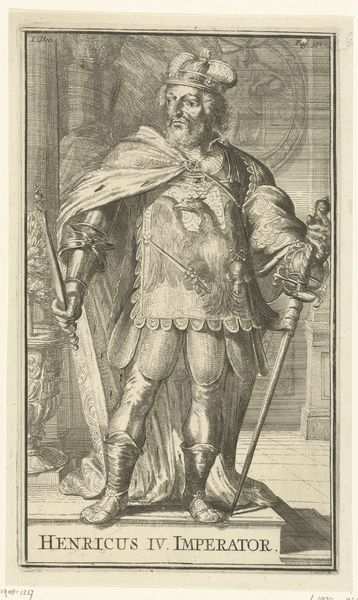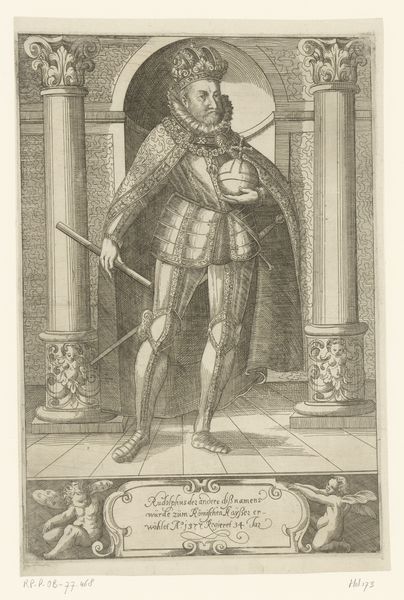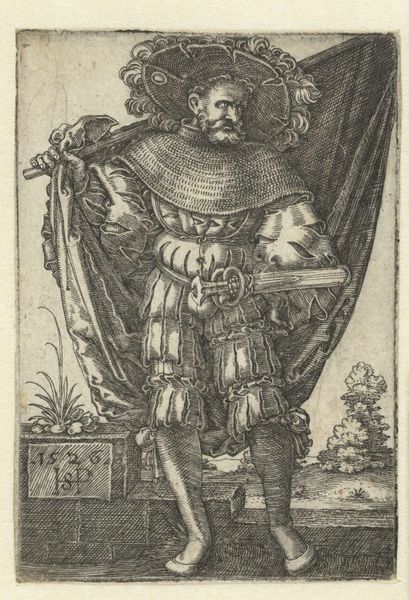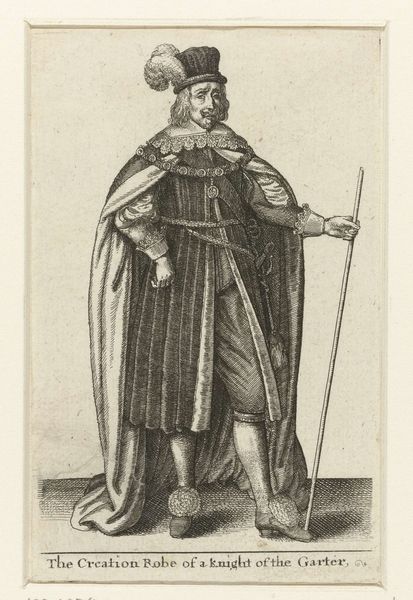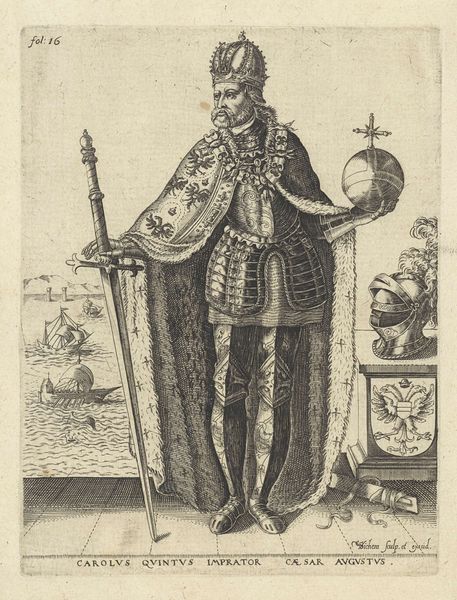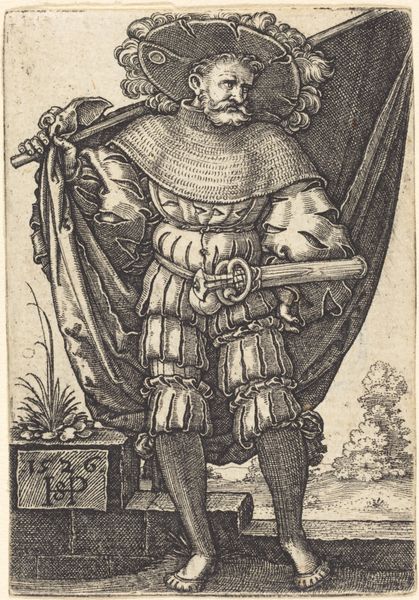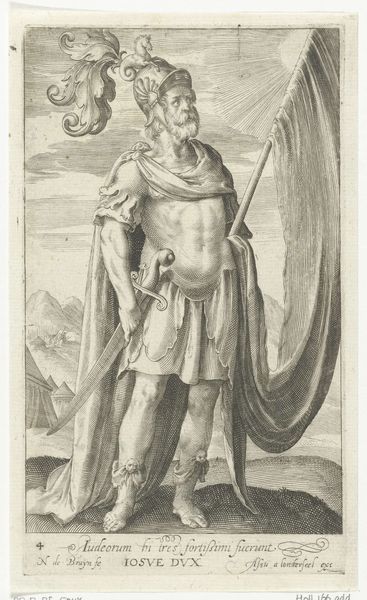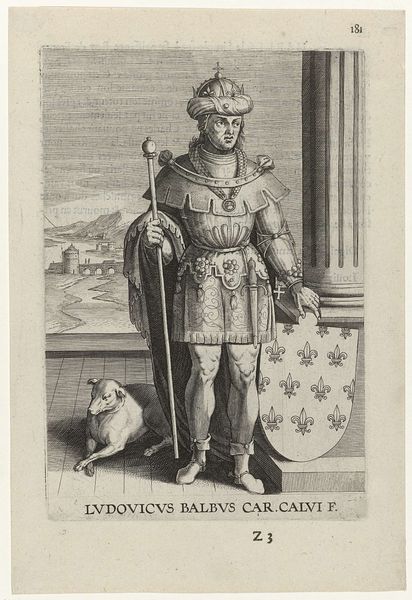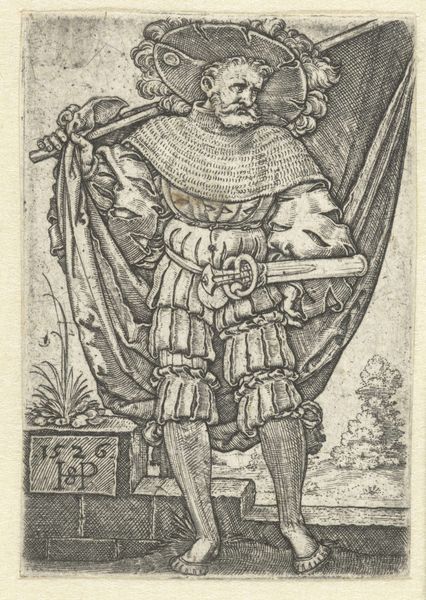
metal, engraving
#
portrait
#
metal
#
11_renaissance
#
history-painting
#
engraving
Dimensions: height 206 mm, width 146 mm
Copyright: Rijks Museum: Open Domain
Curator: Here we have Philips Galle's "Portret van Karel de Kale," an engraving dating back to 1603, now residing here at the Rijksmuseum. What strikes you about it? Editor: The steeliness, the literal armour plating! He looks like he's ready for battle, or at least posing to suggest such readiness. There is very little vulnerability here, this is an image meant to project strength, dominance, and, of course, the authority of a monarch. Curator: Precisely. This isn't just a portrait; it's a statement. Galle was known for his engravings that circulated widely, shaping perceptions of historical figures. The context is crucial here; consider the power dynamics of the era, the role of monarchs, and how these images functioned as propaganda. Editor: Propaganda, absolutely. Think about how carefully this image would be curated, who gets access to it, and the message that's being deliberately conveyed. I wonder about Charles the Bald himself – did he have any agency in how he was depicted? Curator: Galle created this work centuries after the death of Charles the Bald. It's about constructing an image of power in a very specific early modern context. We see the fleur-de-lis motif, a powerful identifier. It's fascinating to consider the political forces at play when crafting and disseminating imagery such as this. It's also worth noting the landscape in the background and the symbolic items around him: a sword, the shield and the column. Each item is supposed to enhance the impression of kingship. Editor: All these strategically positioned details amplify an ideal. We need to also interrogate the visual language of power—the semiotics, even—embedded in something seemingly straightforward like this. It is about historical context, as you say, but it's also about critiquing those power dynamics, unveiling the inherent ideologies being promoted and who they're excluding. This is about interrogating historical image making. Curator: Indeed. What seems like a simple depiction is actually a dense tapestry of social and political intentions. The distribution networks also affected perceptions. Images could legitimize claims to power but also become the focus for critics in broadsides and satires. Editor: Yes, the meaning of this artwork lives as much in the context of its time as in what we can glean about our own through interrogating images such as this today. Curator: Looking closely at pieces such as this also gives us great insights into printmaking and how social messaging would move through society in early modern Europe. Editor: And for me, it challenges us to unpack power— who is represented, who is left out, and what unspoken rules exist within these images from history?
Comments
No comments
Be the first to comment and join the conversation on the ultimate creative platform.

